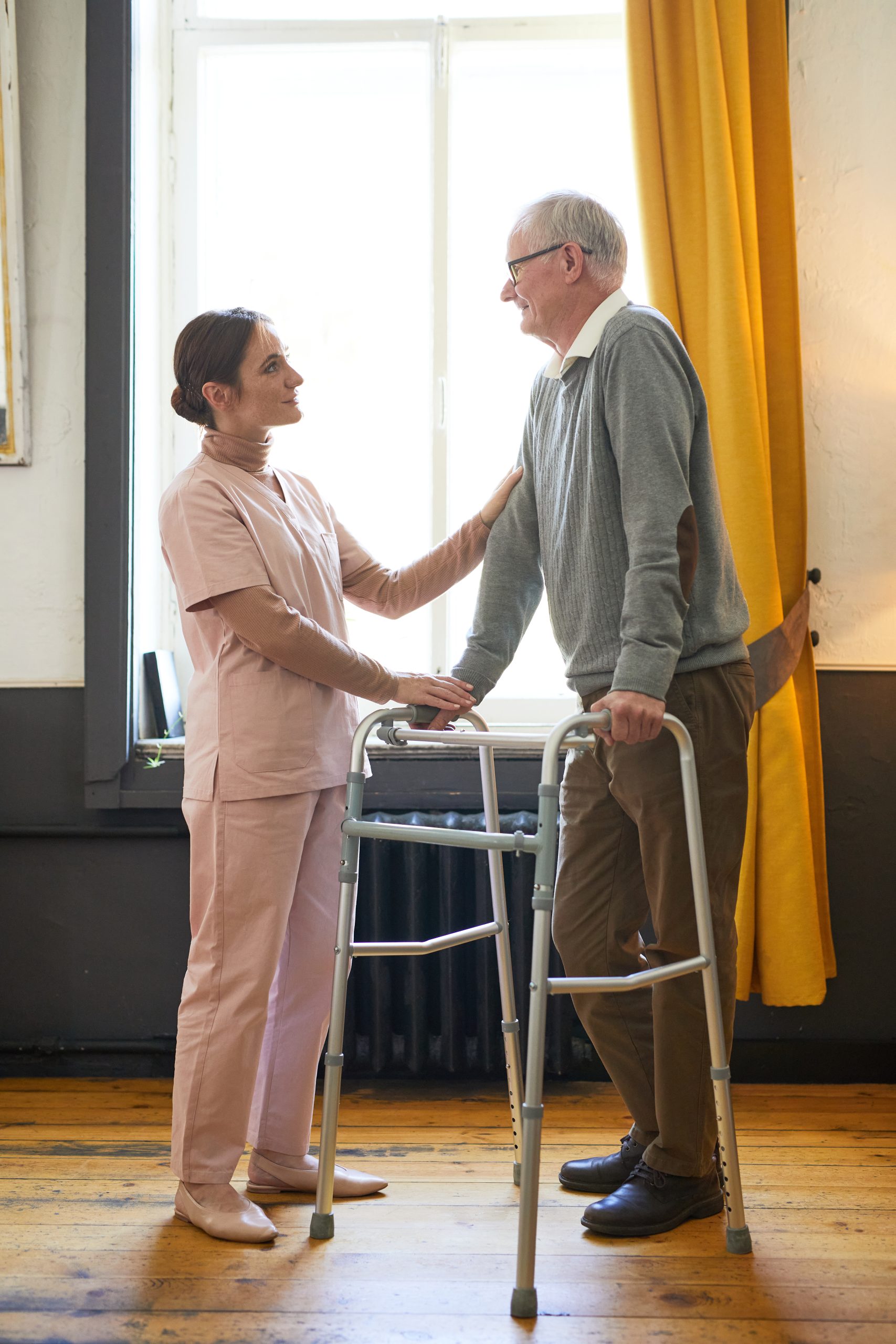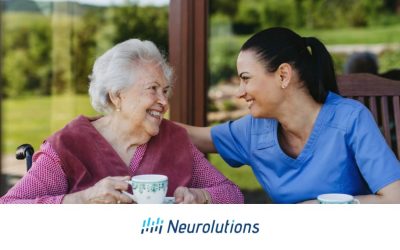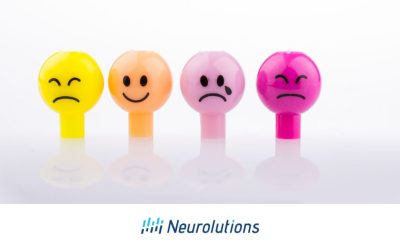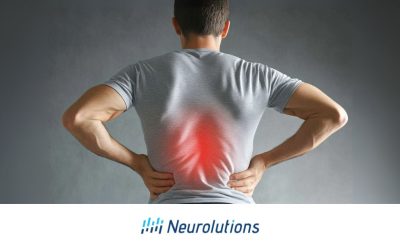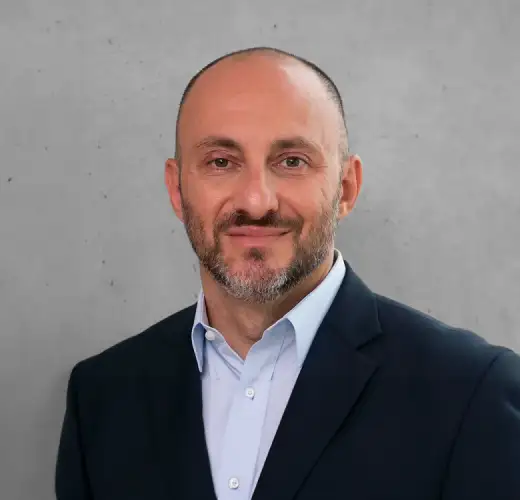Understanding Physical Therapy After Stroke
Physical therapy (PT) is a specialized healthcare profession focused on restoring movement and function after injury or illness.
For stroke survivors, physical therapists (PTs) are essential members of the rehabilitation team alongside doctors, occupational therapists, speech-language pathologists, and other specialists.1 More than 40% of stroke survivors experience movement or other neurological problems that may require PT intervention.2 The primary goal of PT is to help survivors improve their mobility, balance, and overall physical function so they can move more safely and confidently.
The Need for Physical Therapy After Stroke After Stroke
A stroke happens when blood flow to the brain is interrupted, which causes brain cells to die from the lack of oxygen.2 The location and extent of brain damage determine which specific functions are affected.
One of the most common physical impairments following stroke is hemiparesis, which is weakness or partial paralysis on one side of the body. Survivors may find that their arm, leg, or both limbs on the affected side become weak or completely immobile. Spasticity, another common complication, causes muscles to become rigid and stiff, making normal movement difficult and sometimes painful.3
Some stroke survivors experience balance problems that could increase their risk of falls and limit their ability to walk safely. Trouble with coordination can make it hard to do precise movements. Problems with proprioception, the body’s ability to sense where it is and how it’s moving, can make even simple tasks feel strange and hard to do.
How Physical Therapy After Stroke Promotes Recovery
Working with qualified physical therapy professionals can make a meaningful difference in stroke recovery.
PT helps stroke survivors in many different ways. One important way is by supporting the brain’s natural healing processes through neuroplasticity, the brain’s ability to form new neural connections and reorganize itself after injury.
In PT sessions, practicing regular movements helps maintain muscle strength and flexibility, prevent joint stiffness and contractures, improve circulation, and reduce the risk of complications such as falls and blood clots. The main focus of PT is on helping stroke survivors regain movement, balance, and function.4 When needed, PT can help survivors learn compensatory strategies, which are new ways of moving or using assistive devices that work around their limitations.
Common Physical Therapy Exercises for Stroke Patients
Physical therapists use targeted exercises and specialized techniques to address each survivor’s specific needs and recovery goals.
PT strategies fall into several key categories, each designed to target specific impairments and functional limitations:
- Strength, Balance, and Gait Training: Exercises that form the foundation of many rehabilitation programs, helping survivors rebuild muscle power and coordination while learning to walk or climb stairs safely again.
- Assistive Devices: PTs train survivors in the proper use of canes, walkers, and wheelchairs to improve balance and mobility.
- Transfer Training: Teaches safe movement between surfaces like beds, chairs, and toilets.
Other treatments may include hands-on therapy to move and stretch muscles, electrical stimulation to help weak muscles work, and water therapy, which uses the support and buoyancy of water to make exercise easier and safer.5 Aerobic conditioning helps improve cardiovascular health and overall endurance, which supports physical recovery and may reduce the risk of future strokes.6
Benefits of Physical Therapy for Stroke Survivors
PT can aid recovery by preventing further complications from stroke, helping survivors regain lost movement skills, and rebuilding confidence in daily life.
With PT, survivors can regain functional mobility and independence.7 It addresses the specific challenges each survivor faces, whether that’s relearning to walk, improving balance, or rebuilding the strength needed for daily activities.
The progressive nature of PT enables survivors to achieve meaningful milestones that rebuild their confidence and sense of control over their recovery journey.
It also plays a crucial role in reducing the risk of serious complications that can derail recovery progress. Moving and exercising regularly helps stop muscles from getting stiff,and can avoid joint contractures, and pressure sores from forming when someone stays in one position too long.8
Integrating Physical Therapy with Home and Community Life
Recovery continues beyond the clinic when PT principles are woven into daily routines and community activities.
PTs develop personalized home exercise programs so survivors can continue their rehabilitation in between their therapy sessions. Family members and care partners* can play a valuable role in supporting physical activity, though both parties may need ongoing guidance to maintain long-term participation.9
Community-based exercise programs extend the benefits of PT by connecting survivors with local fitness resources and fall prevention initiatives. Organizations like community centers, YMCAs, and specialized stroke recovery programs may offer group classes designed specifically for stroke survivors. These programs help survivors maintain their fitness levels, prevent future complications, and build confidence in their abilities while reducing the isolation that often accompanies stroke recovery.
 |
|
Conclusion
Working with qualified PT professionals can make a meaningful difference in stroke rehabilitation.
Leading medical centers now recognize the critical importance of early intervention, with some hospitals incorporating PTs into stroke care teams within the first 24 to 36 hours of admission.10 Starting rehab early helps patients begin regaining abilities and reach their full recovery potential more quickly.
The multidisciplinary team approach, including physicians, PTs, OTs, speech therapists and other specialists, ensures that each survivor receives comprehensive care customized for their needs and goals.
With proper guidance from qualified professionals and the support of care partners, stroke survivors can achieve meaningful improvements in mobility, independence, and overall well-being throughout their recovery journey.
©2025 Kandu, Inc. All Rights Reserved. | 8090.937.V3.E
References:
- American Stroke Association. The Rehabilitation Team. Webpage: https://www.stroke.org/en/life-after-stroke/stroke-rehab/the-rehabilitation-team
- Healthline. What to Know About Physical Therapy After a Stroke. Webpage: https://www.healthline.com/health/stroke/physical-therapy-for-stroke-patients
- American Stroke Association. Spasticity. Webpage: https://www.stroke.org/en/about-stroke/effects-of-stroke/physical-effects/spasticity
- Shahid J, Kashif A, Shahid MK. A Comprehensive Review of Physical Therapy Interventions for Stroke Rehabilitation: Impairment-Based Approaches and Functional Goals. Brain Sci. 2023;13(5):717. Webpage: https://pmc.ncbi.nlm.nih.gov/articles/PMC10216461/
- Stroke Rehabilitation Clinician Handbook 2020. Lower Extremity Motor and Mobility Rehabilitation. pg. 41 of 71. Webpage: http://www.ebrsr.com/sites/default/files/Chapter%203_Lower%20Extremity_2020_ML.pdf
- Billinger SA, Arena R, Bernhardt J, Eng JJ, Franklin BA, Johnson CM, MacKay-Lyons M, Macko RF, Mead GE, Roth EJ, Shaughnessy M, Tang A; American Heart Association Stroke Council; Council on Cardiovascular and Stroke Nursing; Council on Lifestyle and Cardiometabolic Health; Council on Epidemiology and Prevention; Council on Clinical Cardiology. Physical activity and exercise recommendations for stroke survivors: a statement for healthcare professionals from the American Heart Association/American Stroke Association. Stroke. 2014 Aug;45(8):2532-53. Webpage: https://pubmed.ncbi.nlm.nih.gov/24846875/
- Healthline. Physical Therapy for Stroke Patients: Benefits, Techniques, More. Webpage: https://www.healthline.com/health/stroke/physical-therapy-for-stroke-patients
- Sackley C, Brittle N, Patel S, et al. The prevalence of joint contractures, pressure sores, painful shoulder, other pain, falls, and depression in the year after a severely disabling stroke. Stroke. 2008 Dec;39(12):3329-34. Webpage: https://www.ahajournals.org/doi/10.1161/STROKEAHA.108.518563
- PMC. Active Participation of Care Partners in a Physical Activity Intervention Alongside People with Stroke: A Feasibility Study. Webpage: https://pmc.ncbi.nlm.nih.gov/articles/PMC8816353/
- Johns Hopkins Medicine. Early, Intense Rehabilitation for Stroke Recovery. Webpage: https://www.hopkinsmedicine.org/news/articles/2020/06/early-intense-rehabilitation-for-stroke-recovery


